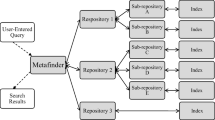Abstract
Multilevel latent class analysis and mixture propensity score models have been implemented to account for heterogeneous selection mechanisms and for proper causal inference with observational multilevel data (Kim & Steiner in Quantitative Psychology Research. Springer, Cham, pp. 293–306, 2015). The scenarios imply the existence of multiple selection classes, and if class membership is unknown, homogeneous classes can be usually identified via multilevel logistic latent class models. Although latent class random-effects logistic models are frequently used, linear models and fixed-effects models can be alternatives for identifying multiple selection classes and estimating class-specific treatment effects (Kim & Suk in Specifying Multilevel Mixture Models in Propensity Score Analysis. International Meeting of Psychometric Society, New York, 2018). Using the Korea TIMSS 2015 eighth-grade student data, this study examined the potentially heterogeneous treatment effects of private science lessons by inspecting multiple selection classes (e.g., different motivations to receive the lessons) using four types of selection models: random-effects logistic, random-effects linear, fixed-effects logistic, and fixed-effects linear models. Implications of identifying selection classes in casual inference with multilevel assessment data are discussed.
Access this chapter
Tax calculation will be finalised at checkout
Purchases are for personal use only
Similar content being viewed by others
Notes
- 1.
In addition to Gender.type and City.size, model specific variables that differ between classes are PL.sci, PL.math, and Dscpn in RE LOGIT; PL.sci, PL.math, Male, Dscpn, and Pct.disad in RE LINEAR; Sci.ach, Math.ach, Dad.edu, Pct.disad, Aca.emph, and Res.short in FE LOGIT; Sci.ach, Pct.disad, Res.short, and Dscpn in FE LINEAR.
References
Clogg, C. C. (1995). Latent class models. In G. Arminger, C. C. Clogg, & M. E. Sobel (Eds.), Handbook of statistical modeling for the social and behavioral sciences (pp. 311–359). Boston, MA: Springer.
Holland, P. W. (1986). Statistics and causal inference. Journal of the American Statistical Association, 81(396), 945–960.
Hong, G., & Hong, Y. (2009). Reading instruction time and homogeneous grou** in kindergarten: An application of marginal mean weighting through stratification. Educational Evaluation and Policy Analysis, 31(1), 54–81.
Hong, G., & Raudenbush, S. W. (2006). Evaluating kindergarten retention policy: A case study of causal inference for multilevel observational data. Journal of the American Statistical Association, 101, 901–910.
Imai, K., King, G., & Stuart, E. A. (2008). Misunderstandings between experimentalists and observationalists about causal inference. Journal of the Royal Statistical Society: Series A, 171(2), 481–502.
Kim, J. S., & Steiner, P. M. (2015). Multilevel propensity score methods for estimating causal effects: A latent class modeling strategy. In L. van der Ark, D. Bolt, W. C. Wang, J. Douglas, & S. M. Chow (Eds.), Quantitative psychology research (pp. 293–306)., Springer proceedings in mathematics & statistics Cham: Springer.
Kim, J.-S., Steiner, P. M., & Lim, W.-C. (2016). Mixture modeling strategies for causal inference with multilevel data. In J. R. Harring, L. M. Stapleton, & S. Natasha Beretvas (Eds.), Advances in multilevel modeling for educational research: Addressing practical issues found in real-world applications (pp. 335–359). Charlotte, NC: IAP—Information Age Publishing, Inc.
Kim, J.-S., & Suk, Y. (2018, July). Specifying multilevel mixture models in propensity score analysis. Paper presented at the International Meeting of Psychometric Society, New York City, NY, US.
Leite, W. (2016). Practical propensity score methods using R. Sage Publications.
Martin, M. O., Mullis, I. V. S., & Hooper, M. (Eds.). (2016). Methods and procedures in TIMSS 2015. Retrieved from Boston College, TIMSS & PIRLS International Study Center website: http://timssandpirls.bc.edu/publications/timss/2015-methods.html.
McLachlan, G., & Peel, D. (2000). Finite mixture models. New York: Wiley.
Muthén, L. K., & Muthén, B. O. (1998–2017). Mplus user’s guide (8th ed.). Los Angeles, CA: Muthén & Muthén.
Rosenbaum, P. R., & Rubin, D. (1983). The central role of the propensity score in observational studies for causal effects. Biometrika, 70(1), 41–55.
Steiner, P. M., & Cook, D. (2013). Matching and propensity scores. In T. Little (Ed.), The oxford handbook of quantitative methods (pp. 236–258). Oxford, England: Oxford University Press.
Suk, Y., & Kim, J.-S. (2018, April). Linear probability models as alternatives to logistic regression models for multilevel propensity score analysis. Paper presented at the American Educational Research Association, New York City, NY, US.
Wager, S. & Athey, S. (2018). Estimation and inference of heterogeneous treatment effects using random forests. Journal of the American Statistical Association, 1–15.
Acknowledgements
Support for this research was provided by the Office of the Vice Chancellor for Research and Graduate Education at the University of Wisconsin–Madison with funding from the Wisconsin Alumni Research Foundation.
Author information
Authors and Affiliations
Corresponding author
Editor information
Editors and Affiliations
Rights and permissions
Copyright information
© 2019 Springer Nature Switzerland AG
About this paper
Cite this paper
Suk, Y., Kim, JS. (2019). Measuring the Heterogeneity of Treatment Effects with Multilevel Observational Data. In: Wiberg, M., Culpepper, S., Janssen, R., González, J., Molenaar, D. (eds) Quantitative Psychology. IMPS IMPS 2017 2018. Springer Proceedings in Mathematics & Statistics, vol 265. Springer, Cham. https://doi.org/10.1007/978-3-030-01310-3_24
Download citation
DOI: https://doi.org/10.1007/978-3-030-01310-3_24
Published:
Publisher Name: Springer, Cham
Print ISBN: 978-3-030-01309-7
Online ISBN: 978-3-030-01310-3
eBook Packages: Mathematics and StatisticsMathematics and Statistics (R0)



